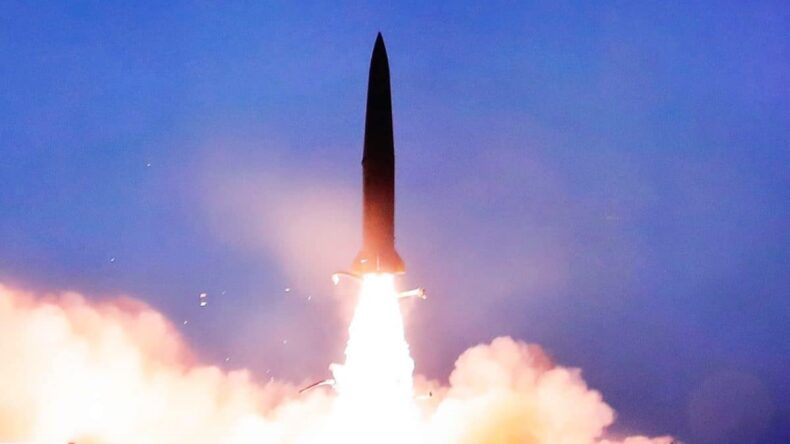A new nuclear underwater attack drone that could launch a nuclear attack and possibly cause a radioactive wave is said to have been tested by North Korea. They assert that the action was retribution for the current military drill between the United States and South Korea.
On Thursday afternoon, the warhead test exploded in Hongwon Bay. According to the state-run media, the drone can launch a nuclear attack that might result in a radioactive tsunami.

The state has blamed South Korea and the United States for brewing the tension in their region after the two countries conducted joint military drills.
North Korea asserts that missiles make super-scale radioactive waves through underwater explosions.
According to KCNA, the creation of the drone was to launch a “Haeil” or “Tsunami”-style sneak assault in enemy waters. It establishes a super-scale radioactive cloud that may destroy naval striker groups and important operational ports because it generates a super-scale radioactive wave by an underwater explosion. The underwater nuclear attack drone can position itself at any coast and port or be moved by a surface ship for operation.

According to the news agency, North Korean leader Kim Jong Un has observed the test. Further, the development of miniaturised nuclear warheads still needs to be clarified, which are required to fit into smaller weapons. Analysts say this is a most anticipated key goal to have all desirable items in smaller warheads, only if the North resumes nuclear testing.
A professor in Seoul suggests approaching it with scepticism.
According to Lief-Eric Easley, a professor at Ewha University in Seoul, it is prudent to be sceptical of Pyongyang’s most recent assertion that it has nuclear-capable underwater drones. The regime has various nuclear attack options, and preemptive or decapitated strikes might potentially fail in a way that would cause catastrophic harm, as we can see from the clear intended buildup above.

On Wednesday, KCNA confirmed the existence of nuclear assaults. The earlier reports from the South Korean military, KCNA, verified a scheduled nuclear assault mission drill and the firing of cruise missiles.
The test warhead, attached to the cruise missile and flew 1500- 1800(930-1120 miles) km, was a replica of a nuclear warhead. The practice also served as a means of proving the capacity of a different military strike, according to KCNA. It validated the potential of control devices and detonators in a mid-air explosion.
There is no detrimental effect on the security of the neighbouring countries.
The security of the neighbouring countries has not yet been threatened or negatively impacted. The North claimed to have carried out the test in retaliation for the U.S., including an amphibious assault ship participating in the largest amphibious landing exercise by South Korean and U.S. troops in years on Monday.
North Korea claims that U.S. imperialists and South Korean exercises are responsible for the Korean Peninsula’s situation. They are advancing it towards an unstoppable dangerous point. These actions would encircle north in all-out conflict and support its nuclear force in terms of quality and quantity on a priority basis.

USS Makin Island, a U.S. ship carrying 10 F-35 stealth fighters, docked at the naval base of the South Korean southeastern port city of Busan. According to Pyongyang, these two areas are getting ready to invade them. The test has been criticised as destabilising and violating UN sanctions, but they reject the assertion and characterise it as strictly defensive.
Gen. Mark Milley, Chairman of the Joint Chiefs of Staff U.S. army, has testified in Congress that after China, as a long-term geostrategic security challenge, North Korea is also one of the significant threats to the region. The continued missile testing and development of nuclear weapons of pose a threat to the allied partners as well in the Indo- Pacific region.












